
This Week is All About Central Banks!
After last week’s ECB 25 bps rate cut, all eyes are now on the Fed to see if it will finally cut rates by 25 bps or take a more aggressive approach with a 50 bps interest rate cut. However, we should not overlook other central banks such as the BoE, PBoC, BoJ, and CBRT, as their decisions will also have significant implications for both domestic and global economies.
In Asia, many markets are on holiday. China’s market will be closed for most of the week, as will Korea’s. In Europe, inflation data from the UK and Eurozone should be monitored closely.
Let’s dive into the week ahead with a particular focus on central bank meetings and market reactions!
Fed, Wall Street, and the US Dollar
While recent data shows that the U.S. labor market is cooling and inflation is easing, unemployment in August fell to 4.2%, down from 4.3% in July. Additionally, the core Consumer Price Index (CPI) rose by 0.3% month-over-month in August, which was not only slightly above consensus forecasts but also the fastest price increase in four months. As a result, this economic resilience may prompt FOMC members to exercise more caution in September. While a 50 bps rate cut remains a possibility, we now expect the committee to begin the easing cycle with a milder 25 bps cut.
Economic data highlights better growth in the service sector, where inflation is also running hotter. Core services inflation saw its largest jump since April, increasing by 0.4% monthly. In contrast, the goods sector continues to experience deflation, with core goods prices declining on a monthly basis in 14 of the past 15 months.
As the summer holidays end, airfare and hotel prices tend to ease in the coming months, and housing inflation is expected to slow significantly as well. Therefore, despite August’s uptick, there is sufficient evidence of deflationary pressures, which should give the Fed confidence to start cutting rates in its September meeting.
On the labor market front, the 142K payroll print for August confirmed that the labor market is cooling. With 230K initial jobless claims, layoffs are not increasing rapidly, indicating that the labor market is decelerating rather than rapidly deteriorating.
Given the overall economic data, market sentiment, and the approaching election, it seems more logical to expect a 25 bps rate cut, which the market has already priced in. As a result, the dot plots and Fed Chair Powell’s press conference will take center stage.
The Fed typically updates its projections at the end of each quarter—March, June, September, and December. The March and June projections extend over the next two years, while the September and December projections include estimates for the third year, making market reactions difficult to predict.
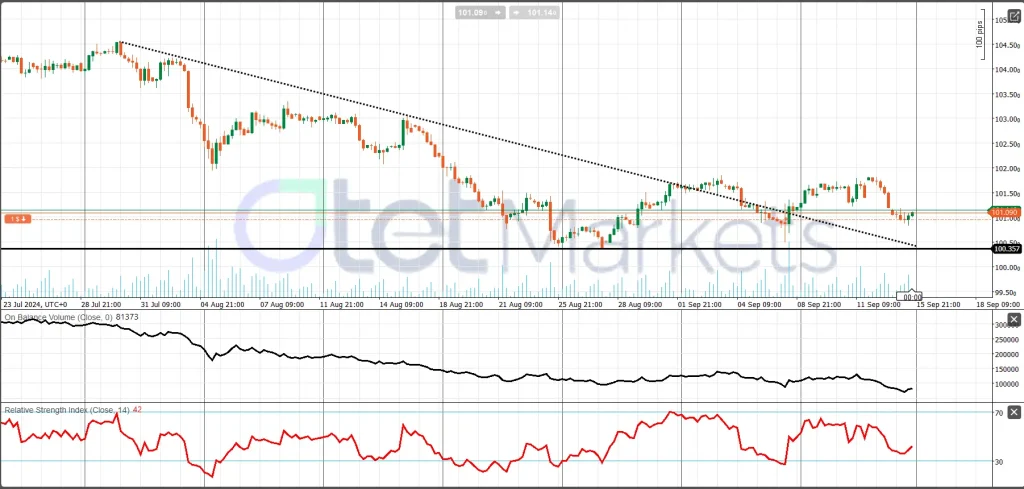
The U.S. dollar ended the week at nearly the same level as where it started on Monday, around 101.10, although it rose above 101.80 during the week. On Thursday, the chance of a 50 bps rate cut increased to 45%, and then 50% on Friday, up from less than 15% earlier in the week. As a result, the U.S. dollar weakened, and stocks rose. We expect a 25 bps rate cut, so the market’s reaction to the projections and press conference will be key. We anticipate a less dovish stance, which would be positive for the U.S. dollar and negative for stocks. However, any outcome contrary to our predictions will likely produce the opposite effect.
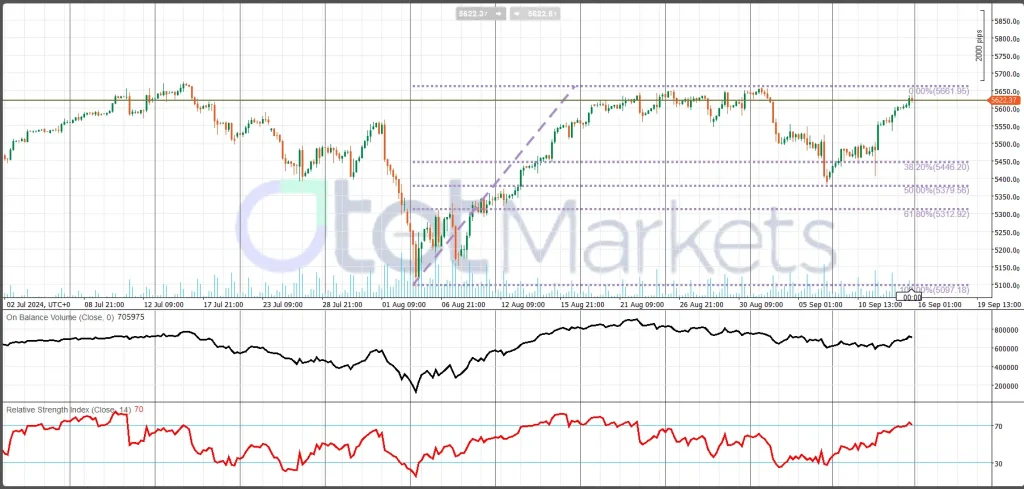
Busy Week in the UK, with BoE at Center Stage!
This is going to be a pivotal week for the UK economy. Key events include inflation data on Wednesday, a Bank of England (BoE) meeting on Thursday and retail sales figures on Friday.
On the inflation front, the UK is making significant progress. Consumer inflation fell to its lowest level since April 2021, hitting 2% in June before slightly recovering to 2.2% in July—still below the 2.5% market estimate. However, the concern remains around the 5% inflation in the services sector. For the week ahead, August’s inflation data is expected to remain steady at 2.2%.
Looking at other economic data, we see a mixed picture. In the labor market, average earnings dropped sharply to 4.0% in July, down from 4.6% in June, while the unemployment rate eased to 4.1%, aligning with estimates. GDP was flat in July, but second-quarter growth showed a modest increase, confirming the UK’s economic recovery is still on track. However, after several months of growth, PMI figures dipped slightly in July.
Given these numbers, it seems logical for policymakers to adopt a more cautious approach. They may prefer to wait and assess the impact of August’s 25 bps rate cut before proceeding with further rate reductions or adjusting monetary policies.
These estimates and central bank decisions could favor the British pound (Cable), though they might not be as welcome in the British stock market. Notably, with an expected rate cut in the U.S. and stable rates in the UK, the GBP could gain against the U.S. dollar. From a technical perspective, the H4 chart shows that after reaching 1.326, GBP/USD saw a correction but remained above the 38.2% Fibonacci level. Currently, the 50% Fibonacci level around 1.30 is a key pivot point. Holding this level could push the pair toward higher levels.
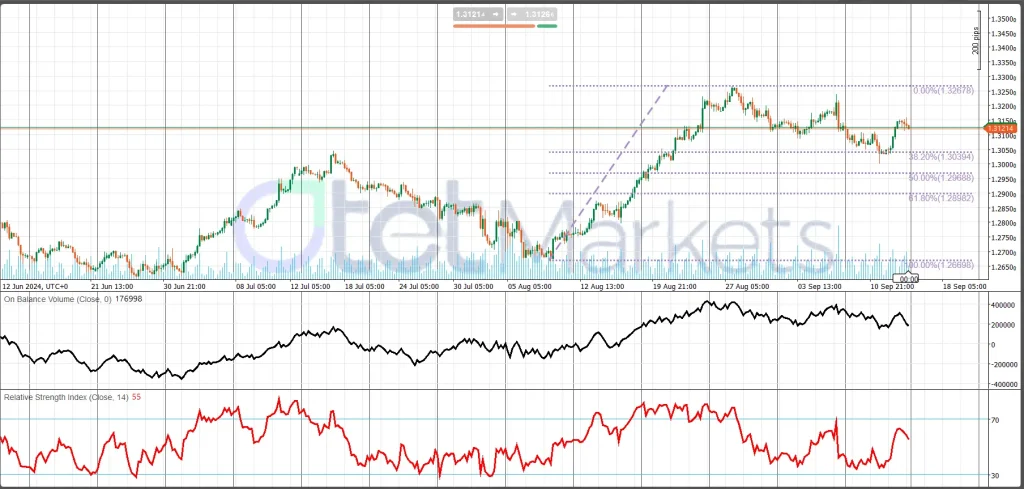
Gold: Can Anyone Stop the Rally?
Gold continues to reach new highs, as widely expected for several reasons highlighted in recent weeks and months. There are numerous factors driving demand in the gold market. The most obvious is that central banks worldwide are cutting rates, and some are even buying gold. Later this week, we anticipate more rate cuts, particularly from the US Fed, which would provide a significant boost to gold.
Beyond economic data, global geopolitical tensions remain high, adding to gold’s appeal as a safe-haven asset. Recently, the United Nations Security Council held a meeting about Western arms supplies to Kyiv, sparking a sharp reaction from Russia. Russia’s Permanent Representative, Vasily Nebenzya, warned that NATO countries could start a “direct war with Russia.” Meanwhile, tensions between Israel and Palestine show no signs of easing, further contributing to global uncertainty.
From a market perspective, there are more reasons to buy gold than to sell. Technically, the outlook remains bullish, although a correction is possible. Current key support is around 2,530, with the key pivot at the lower band of its previous range, near 2,490.
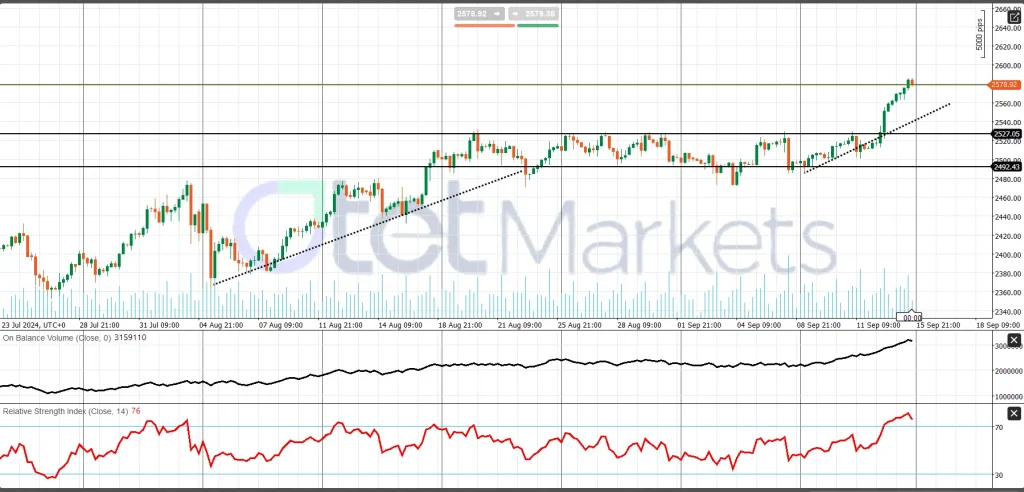
Oil and Chinese Data
Oil closed slightly higher, about $1 above its Monday opening price of $68.29. China is facing the risk of an economic slowdown, which is weighing on oil prices, global bond yields, and the dollar. Following weaker demand expectations from China, OPEC has also lowered its outlook for global oil demand.
Last week began with lower-than-expected inflation growth in China, signaling ongoing weak domestic demand, and ended with slower industrial production. According to data published on Saturday, September 14, China’s industrial production in August increased by only 4.5%, down from the 5.1% growth seen in July. Additionally, the labor market showed signs of strain, with unemployment rising to 5.3%, up from 5.2% in July, casting doubt on future consumer spending potential.
Later this week, the People’s Bank of China will hold its interest rate decision and monetary policy meeting. We do not anticipate any changes in rates or policies. However, with most other central banks adopting more dovish policies and ongoing geopolitical tensions, there is limited room for price increases, though a significant drop in prices also seems unlikely.
From a technical perspective, the downtrend appears to have ended. As oil prices rise, more buyers are entering the market, as indicated by the OBV signal. The RSI at 55 also supports a bullish outlook on the H4 chart.
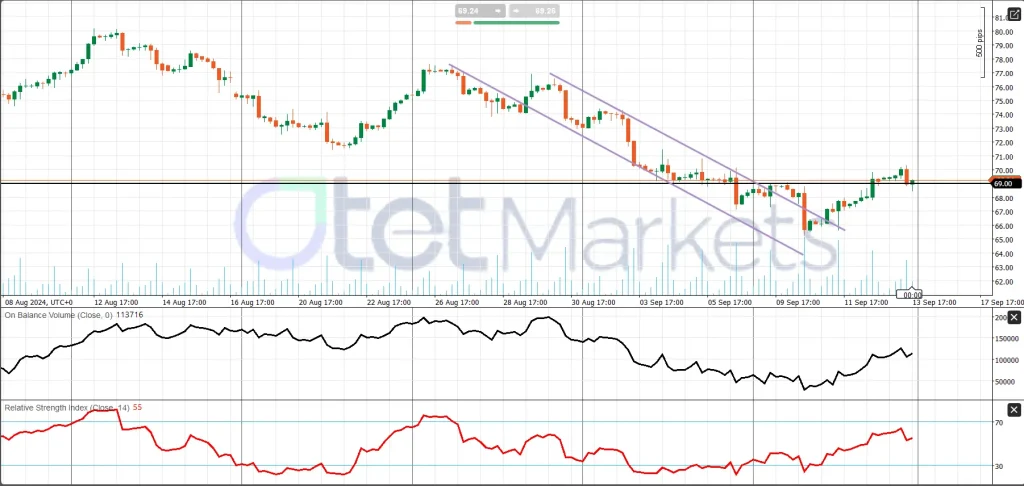
Bitcoin
In the H4 chart, Bitcoin shows a significant downtrend followed by a period of consolidation and a recent uptrend. The most recent price action indicates the asset is trading in an upward trajectory, breaking past previous resistance levels, which may suggest a bullish sentiment in the market.
Fibonacci Retracement Levels are drawn from a high of approximately 65,400 to a low of around 52,736. The 61.8% Fibonacci level, at around 60,340, has been surpassed, which often acts as a strong resistance level. The price is currently testing the 50% retracement level near 58,888, which may now act as support.
The On-Balance Volume (OBV) shows a steady increase, suggesting that the recent price rise is backed by strong volume. This is a bullish signal, as it indicates strong buying pressure that may continue to drive prices higher.
The Relative Strength Index (RSI) is around 69, near the overbought territory (above 70). This suggests that Bitcoin might face a pullback or consolidation soon, as traders could start taking profits due to perceived overvaluation.
The next major resistance can be expected near the 100% retracement level at around 65,400 if the bullish momentum continues. Immediate support is likely around the 50% Fibonacci level at approximately 58,888. Further support could be found at the 38.2% level near 57,436, which aligns with previous price consolidations.
Overall, BTC/USD is currently in a bullish phase, breaking past significant resistance levels with strong volume, as indicated by the OBV. However, caution is advised since the RSI is approaching overbought levels, which could lead to a potential pullback or consolidation in the near term.
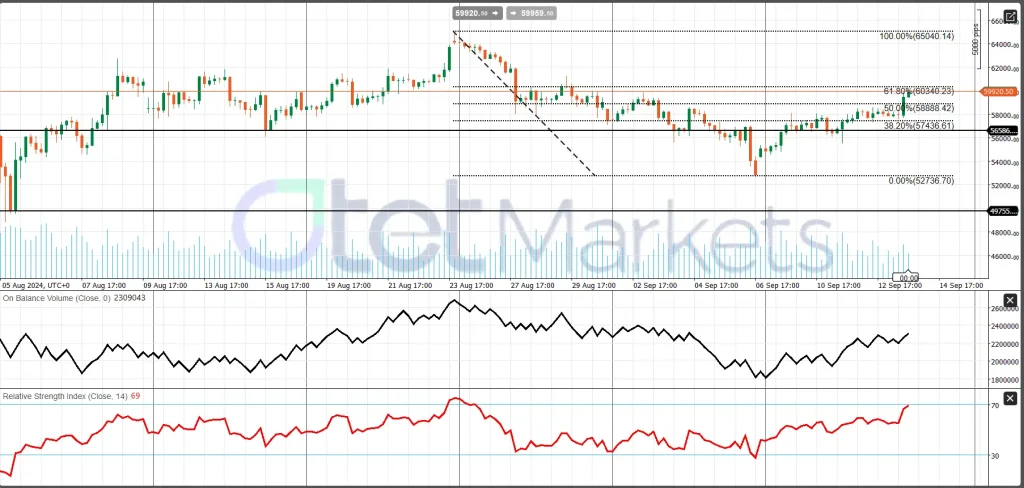
Share
Hot topics

What Is Forex Fundamental Analysis?
Forex trading can seem confusing from the outside. Charts move quickly, prices change every second, and traders talk about pips (the smallest unit of price movement), spreads (the difference between...
Read more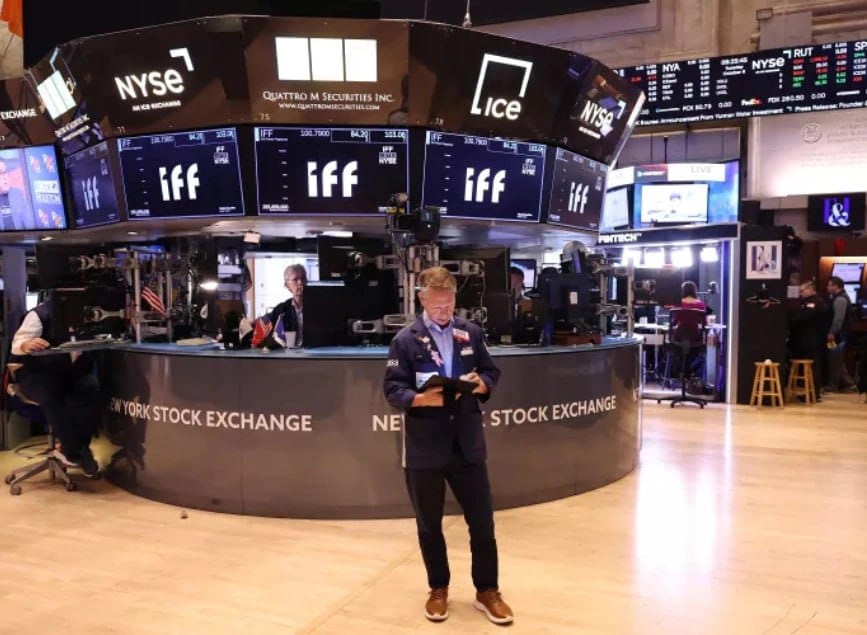




Submit comment
Your email address will not be published. Required fields are marked *